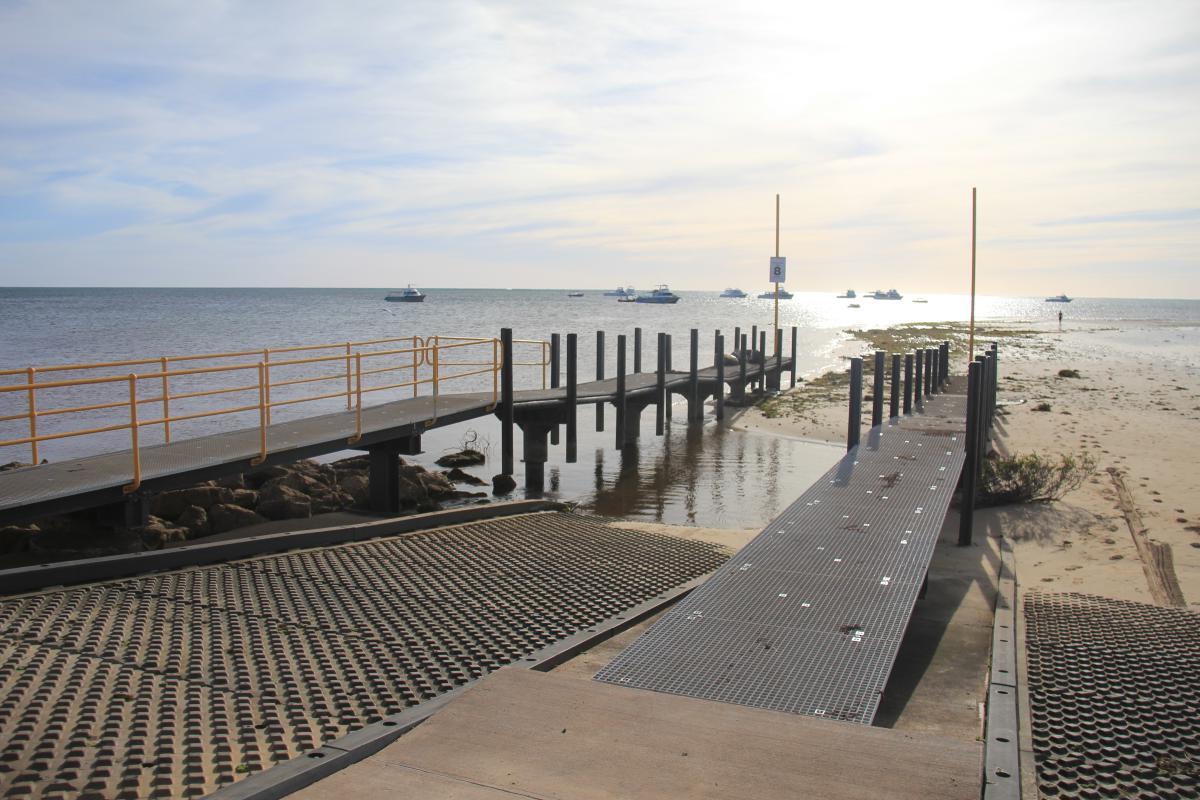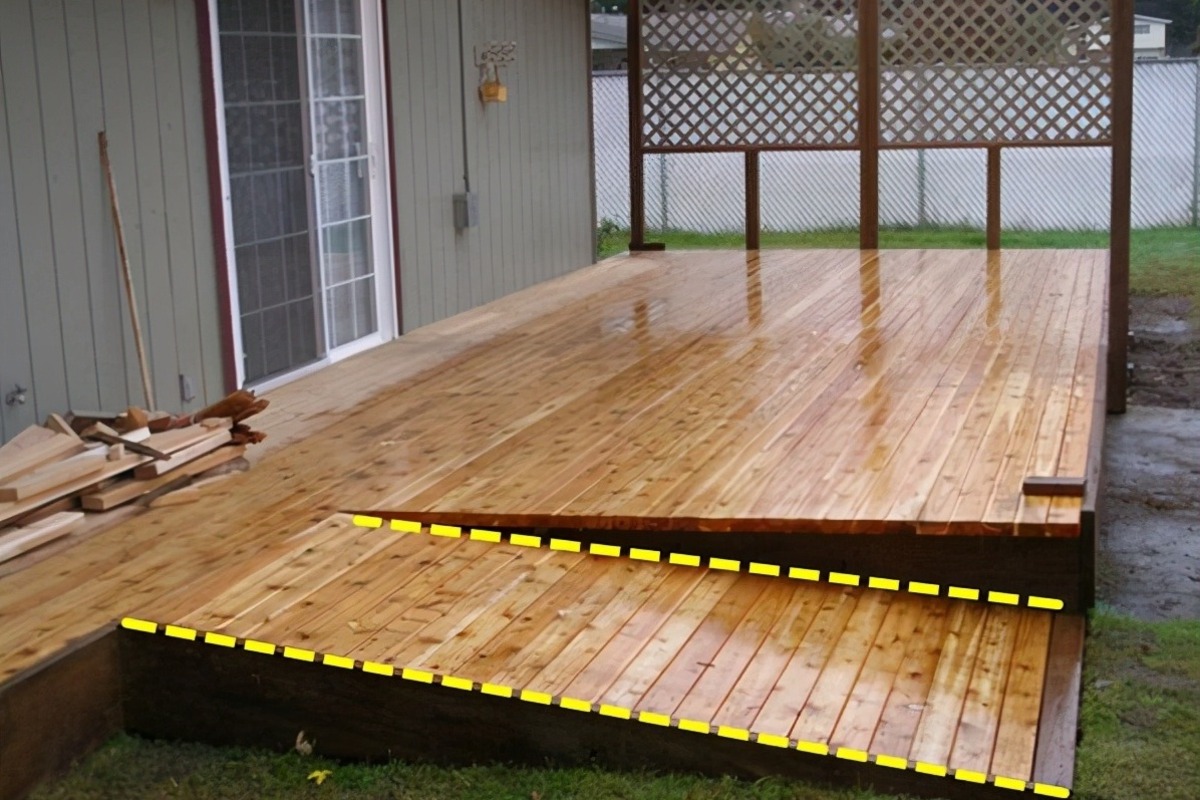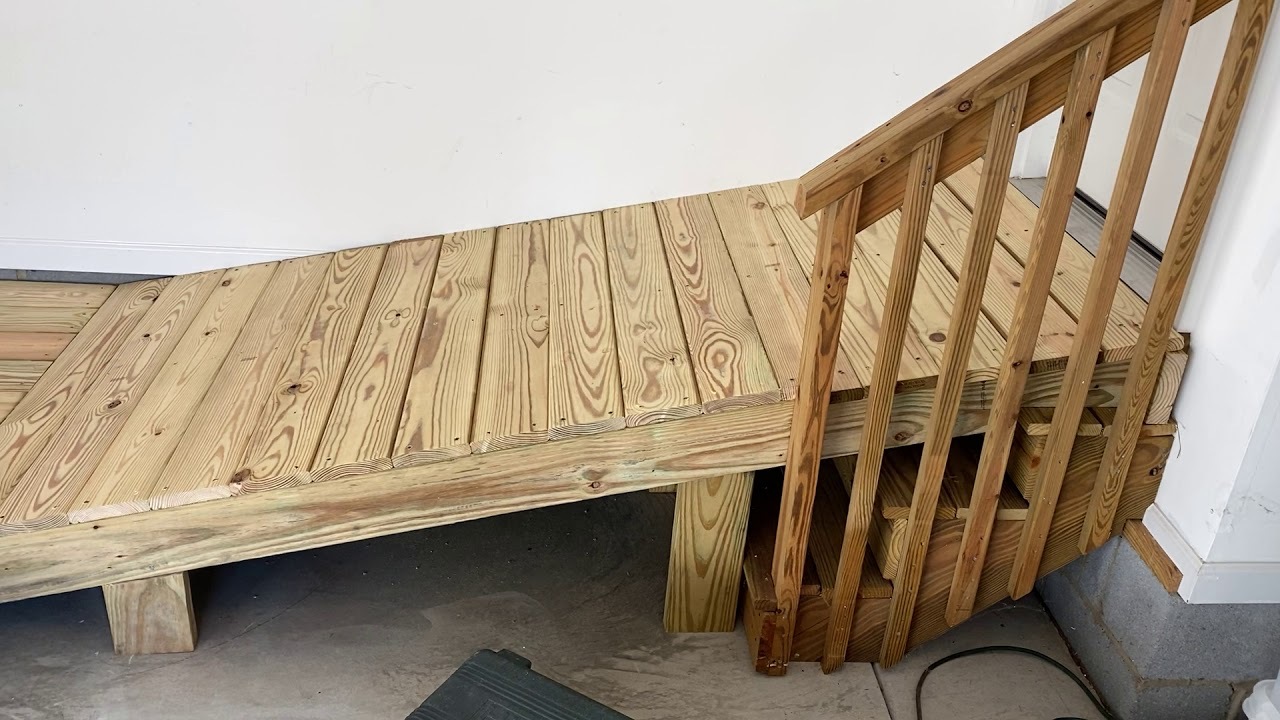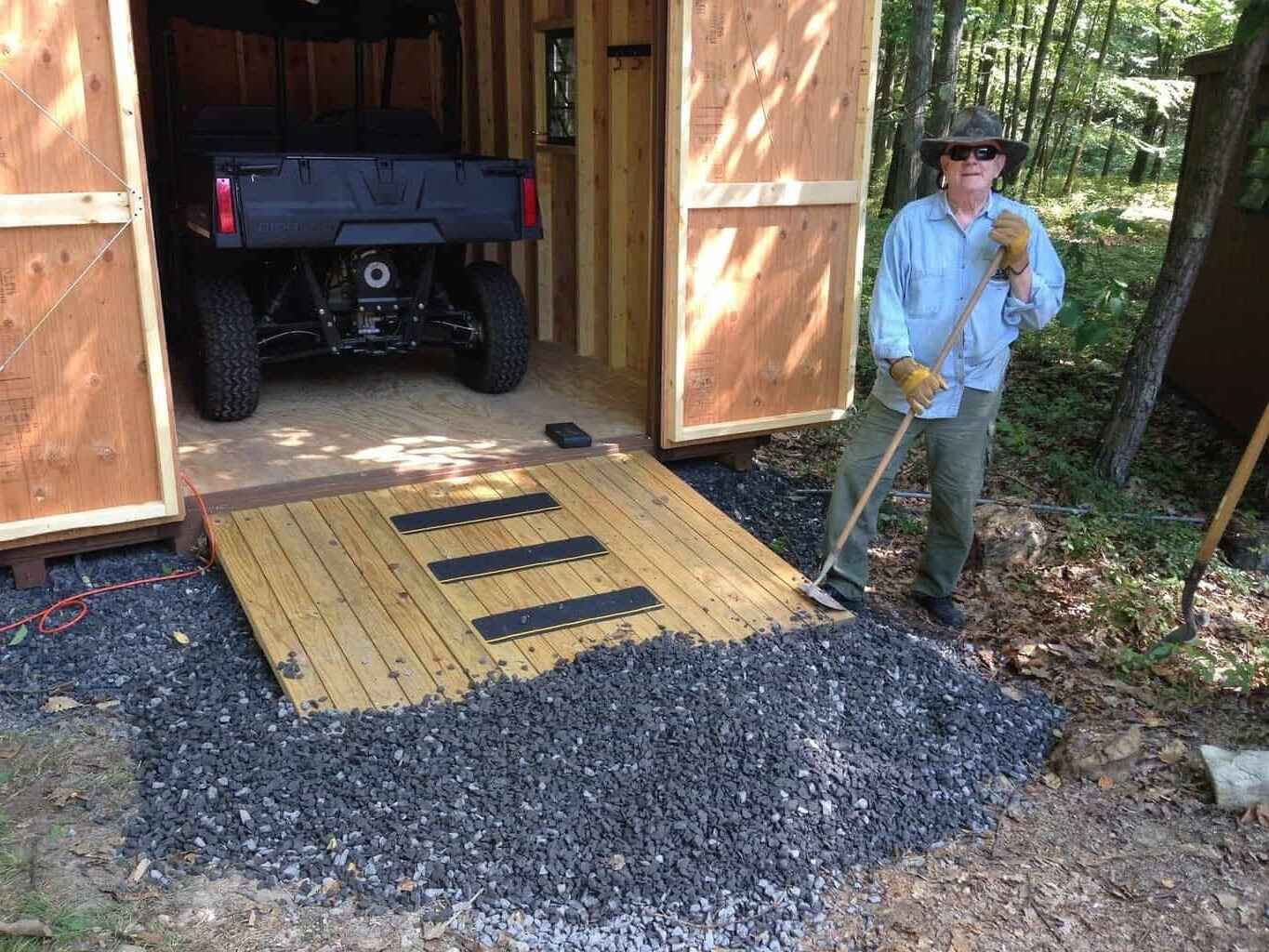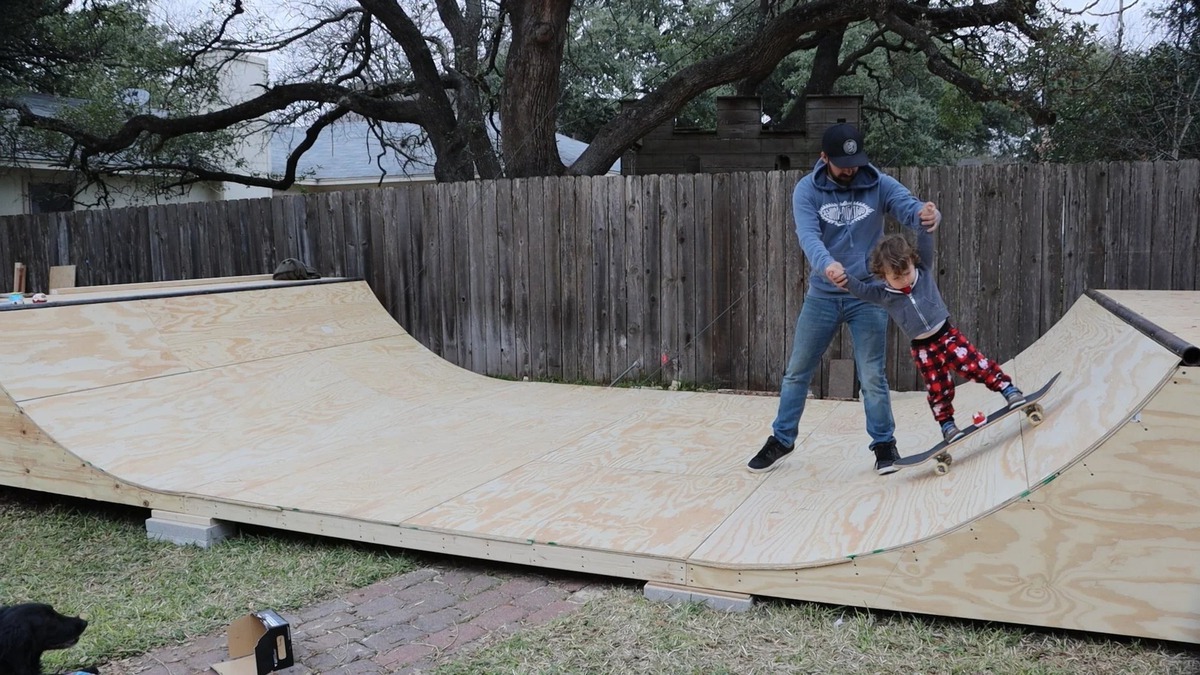Home>Create & Decorate>DIY & Crafts>How To Build A Wheelchair Ramp
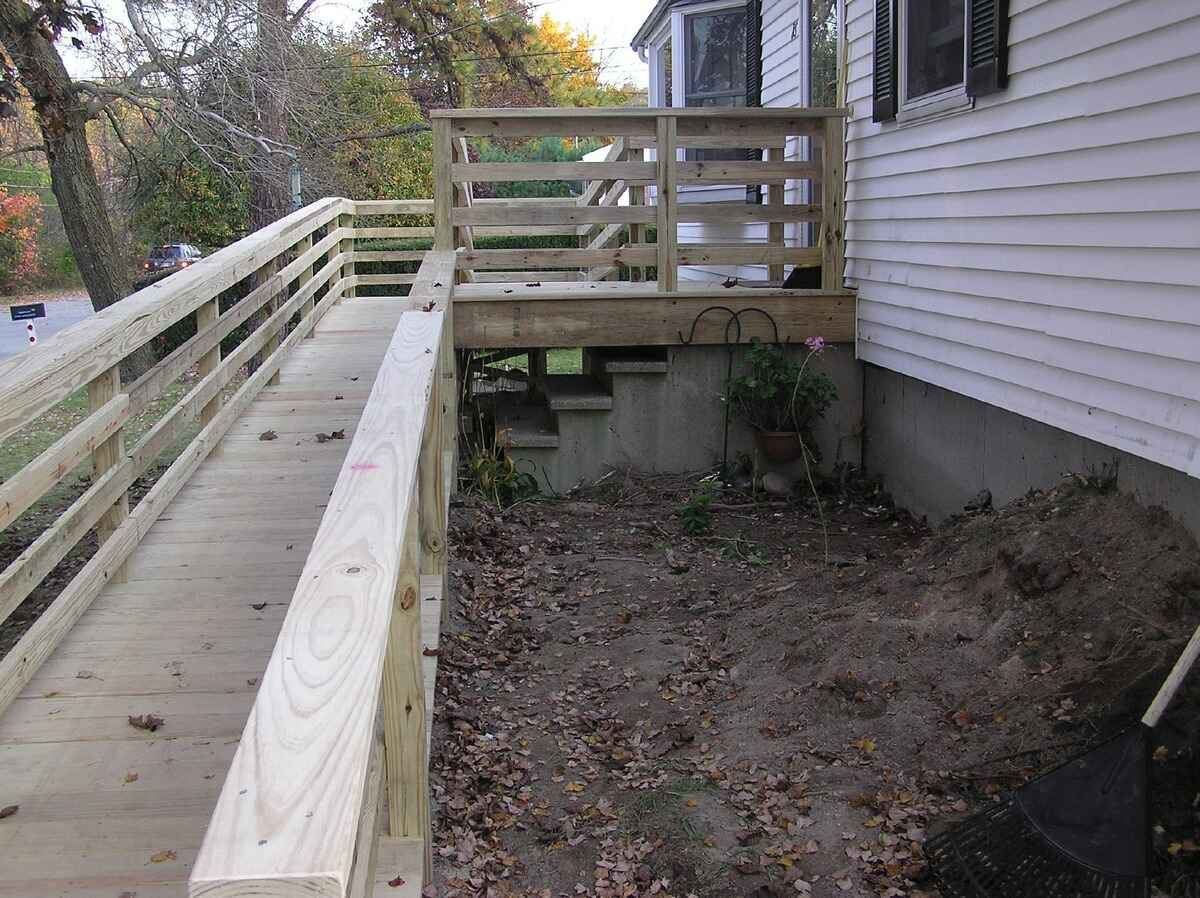

DIY & Crafts
How To Build A Wheelchair Ramp
Published: February 28, 2024

Senior Editor in Create & Decorate, Kathryn combines traditional craftsmanship with contemporary trends. Her background in textile design and commitment to sustainable crafts inspire both content and community.
Learn how to build a wheelchair ramp with our DIY & Crafts guide. Create a safe and accessible entrance for your loved ones. Step-by-step instructions and tips included.
(Many of the links in this article redirect to a specific reviewed product. Your purchase of these products through affiliate links helps to generate commission for Twigandthistle.com, at no extra cost. Learn more)
Introduction
Building a wheelchair ramp is a practical and thoughtful way to enhance accessibility for individuals with mobility challenges. Whether it's for your own home, a community center, or a public space, constructing a wheelchair ramp can make a significant difference in someone's life. This comprehensive guide will walk you through the step-by-step process of building a sturdy and safe wheelchair ramp, ensuring that it complies with accessibility standards and provides seamless access for wheelchair users and individuals with limited mobility.
By embarking on this DIY project, you are not only creating a more inclusive environment but also gaining valuable skills in construction and design. The satisfaction of knowing that your efforts will positively impact someone's daily life is immeasurable. Additionally, building a wheelchair ramp can add value to a property and contribute to a more inclusive and welcoming community.
Throughout this guide, you will learn how to assess the need for a wheelchair ramp, select the optimal location for installation, determine the appropriate specifications, gather the necessary materials and tools, and construct the ramp with precision and attention to safety. Furthermore, we will explore the crucial aspect of adding safety features to the ramp, ensuring that it meets the highest standards of accessibility and security.
Whether you are a seasoned DIY enthusiast or a novice looking to expand your skills, this guide will equip you with the knowledge and confidence to undertake this meaningful project. So, roll up your sleeves, gather your tools, and let's embark on this rewarding journey of building a wheelchair ramp that will make a positive impact on the lives of others.
Step 1: Assessing the Need for a Wheelchair Ramp
Before embarking on the construction of a wheelchair ramp, it is crucial to assess the specific requirements and determine the necessity of installing a ramp. This initial step involves evaluating the accessibility challenges faced by individuals with mobility limitations and identifying the areas where a wheelchair ramp would significantly improve access and convenience.
Understanding Accessibility Challenges
Begin by considering the daily activities and movements of individuals who use wheelchairs or other mobility aids. Assess the entry points to buildings, homes, or public spaces to identify any barriers that hinder smooth access. Pay close attention to steps, uneven surfaces, narrow doorways, and any other obstacles that pose challenges to individuals with limited mobility.
Evaluating the Environment
Take into account the layout and terrain of the surrounding environment. Consider factors such as the slope of the ground, the presence of obstacles, and the distance between the entry points and parking areas. Additionally, assess the frequency of wheelchair or mobility aid use in the specific location to gauge the necessity of a ramp.
Consulting with Stakeholders
Engage in conversations with individuals who would benefit from the installation of a wheelchair ramp, as well as property owners, facility managers, or community members. Gather insights into their experiences and challenges related to accessibility. Their input can provide valuable perspectives and help in determining the most suitable locations for installing the ramp.
Read more: How To Build A Wheelchair Ramp Off A Deck
Compliance with Accessibility Standards
Familiarize yourself with local building codes and accessibility regulations to ensure that the proposed wheelchair ramp meets the necessary standards. Understanding the legal requirements and guidelines is essential for creating a ramp that not only addresses the immediate needs but also complies with accessibility regulations, ensuring safety and inclusivity for all individuals.
By thoroughly assessing the need for a wheelchair ramp, you lay the foundation for a well-informed and purposeful construction process. This careful evaluation sets the stage for the subsequent steps, guiding the decision-making process and ensuring that the wheelchair ramp will effectively address the accessibility challenges in the specific environment.
Step 2: Choosing the Right Location for the Ramp
Selecting the optimal location for the installation of a wheelchair ramp is a critical decision that significantly influences its functionality and effectiveness. The chosen location should not only address the accessibility needs but also seamlessly integrate with the existing environment, ensuring a harmonious and practical addition to the space.
Evaluating Entry Points and Traffic Flow
Begin by identifying the primary entry points to the building or space where the wheelchair ramp will be installed. Consider the frequency of use and the flow of traffic in these areas. It is essential to choose a location that provides convenient access to individuals with mobility challenges while minimizing disruptions to the overall traffic flow. Additionally, assess the surrounding space to ensure that the ramp does not obstruct pathways or create congestion in high-traffic areas.
Considering Terrain and Slope
Evaluate the terrain and slope of the ground surrounding the entry points. The chosen location should offer a natural and gradual transition for individuals using wheelchairs or mobility aids. Ideally, the terrain should allow for a smooth and gentle incline, minimizing the need for extensive excavation or complex structural adjustments. Additionally, consider the impact of weather conditions on the chosen location, ensuring that the ramp remains accessible and safe in various seasons.
Read more: How To Build A Ramp
Addressing Safety and Visibility
Prioritize safety when selecting the location for the wheelchair ramp. Choose an area that provides good visibility and lighting, minimizing potential hazards and ensuring a secure passage for individuals with limited mobility. Adequate lighting and clear visibility contribute to a sense of security and confidence for those using the ramp, especially during evening hours or low-light conditions.
Incorporating Aesthetic Integration
While functionality is paramount, it is also important to consider the aesthetic integration of the wheelchair ramp within the existing architecture and landscape. Strive to select a location that allows the ramp to blend harmoniously with the surroundings, complementing the overall design of the space. By integrating the ramp seamlessly, it becomes an organic and inclusive element of the environment, enhancing the visual appeal while serving its practical purpose.
Engaging Stakeholders and Community Input
Engage in discussions with stakeholders, including individuals with mobility challenges, property owners, and community members, to gather insights and perspectives on the most suitable location for the wheelchair ramp. Their input can provide valuable guidance and ensure that the chosen location aligns with the needs and preferences of the community.
By carefully considering these factors and engaging in thorough evaluations, you can confidently select the right location for the wheelchair ramp, ensuring that it optimally addresses accessibility needs while seamlessly integrating with the existing environment. This thoughtful approach sets the stage for the subsequent steps in the construction process, laying the groundwork for a well-planned and purposeful installation.
Step 3: Determining the Ramp Specifications
When it comes to building a wheelchair ramp, determining the ramp specifications is a crucial step that directly impacts the functionality, safety, and compliance of the structure. The specifications of the ramp encompass various elements, including dimensions, slope, materials, and additional features, all of which are essential in creating a well-designed and accessible ramp.
Read more: How To Build A Ramp For A Shed
Assessing Dimensional Requirements
The first consideration in determining the ramp specifications is to assess the dimensional requirements based on the specific location and the needs of the users. The width of the ramp is a critical factor, ensuring that it provides ample space for wheelchair users to navigate comfortably. According to accessibility guidelines, the minimum width for a wheelchair ramp is typically 36 inches, although a wider ramp, such as 48 inches, can offer enhanced maneuverability and accommodate larger mobility devices.
Additionally, the length of the ramp is determined by the vertical rise it needs to overcome. The slope and length of the ramp are interconnected, and adhering to the recommended slope ratio is essential for ensuring ease of use and safety. The standard slope ratio for wheelchair ramps is 1:12, meaning that for every 1 inch of vertical rise, there should be 12 inches of ramp length. However, in certain circumstances, a steeper slope may be permissible with the use of a platform or resting area to maintain user comfort and safety.
Selecting Suitable Materials
Choosing the right materials for the construction of the ramp is pivotal in ensuring durability, stability, and longevity. Pressure-treated lumber, aluminum, or composite materials are commonly used for building wheelchair ramps due to their strength, weather resistance, and low maintenance requirements. The selection of materials should also consider factors such as weight capacity, slip resistance, and ease of installation, catering to the specific needs of the users and the environmental conditions.
Incorporating Safety Features
Incorporating safety features into the ramp design is paramount for creating a secure and user-friendly structure. This includes the installation of handrails on both sides of the ramp, providing support and stability for individuals using the ramp. The handrails should meet height and graspability requirements, offering a firm grip and guidance along the entire length of the ramp. Additionally, the inclusion of edge protection, non-slip surfacing, and transition plates at the top and bottom of the ramp enhances safety and accessibility, minimizing the risk of accidents and ensuring a smooth passage for wheelchair users.
By meticulously determining the ramp specifications, including dimensions, materials, and safety features, you lay the groundwork for a well-designed and compliant structure that meets the specific accessibility needs of the users. This detailed planning ensures that the construction process progresses with precision and purpose, setting the stage for the subsequent steps in building a functional and inclusive wheelchair ramp.
Step 4: Gathering Materials and Tools
Gathering the necessary materials and tools is a pivotal phase in the construction of a wheelchair ramp. This step requires careful planning and attention to detail to ensure that the ramp is built with precision, durability, and compliance with accessibility standards.
Read more: How To Build A Handicap Ramp
Materials
The selection of materials plays a significant role in determining the strength, longevity, and overall quality of the wheelchair ramp. Commonly used materials for building ramps include pressure-treated lumber, aluminum, and composite materials. These options offer a balance of durability, weather resistance, and ease of maintenance, catering to the diverse needs of wheelchair users and the environmental conditions.
In addition to the primary ramp materials, it is essential to gather the necessary components for safety features, such as handrails, edge protection, non-slip surfacing, and transition plates. These elements contribute to the overall safety and accessibility of the ramp, providing essential support and minimizing the risk of accidents.
Tools
Equipping yourself with the right tools is crucial for ensuring efficient and precise construction. Essential tools for building a wheelchair ramp include measuring tape, level, circular saw, power drill, screwdriver, framing square, and adjustable wrench. These tools facilitate accurate measurements, cutting of materials, assembly of components, and the installation of safety features, ensuring that the ramp is constructed with meticulous attention to detail.
Furthermore, depending on the specific design and materials chosen for the ramp, additional tools such as a jigsaw, router, or miter saw may be required to achieve custom fittings and precise adjustments. It is important to assess the specific tool requirements based on the chosen ramp design and materials, ensuring that you have all the necessary equipment to streamline the construction process.
By gathering the appropriate materials and tools, you set the stage for a seamless and purposeful construction process, laying the groundwork for the subsequent steps in building a functional and inclusive wheelchair ramp. This meticulous preparation ensures that the construction progresses with efficiency and precision, ultimately resulting in a well-crafted and compliant structure that enhances accessibility and inclusivity.
Step 5: Building the Ramp
With the careful planning and preparation in place, it's time to embark on the construction phase of building the wheelchair ramp. This pivotal step involves translating the detailed specifications and design considerations into a tangible and functional structure that enhances accessibility and inclusivity.
Constructing the Frame
Begin by constructing the frame of the ramp, which serves as the foundational support for the entire structure. Utilizing the selected materials, such as pressure-treated lumber or aluminum, assemble the frame according to the predetermined dimensions and slope ratio. Ensure precise measurements and secure connections to guarantee stability and structural integrity.
Read more: How To Build A Dog Ramp
Installing the Surface
Once the frame is in place, install the surface of the ramp, providing a smooth and durable pathway for wheelchair users. Depending on the chosen materials, such as wooden decking, composite boards, or aluminum planks, ensure secure fastening and a level surface that offers optimal traction and stability. Attention to detail during this phase is crucial to create a seamless and safe passage along the entire length of the ramp.
Adding Handrails and Safety Features
Incorporate the essential safety features by installing handrails along both sides of the ramp. These handrails provide crucial support and guidance for individuals using the ramp, enhancing stability and confidence during navigation. Additionally, ensure the placement of edge protection, non-slip surfacing, and transition plates at the top and bottom of the ramp, minimizing potential hazards and ensuring a secure and accessible pathway.
Securing the Structure
As the construction nears completion, thoroughly inspect the entire ramp to ensure that all components are securely fastened and aligned. Conduct a comprehensive assessment of the structural integrity, surface stability, and safety features to verify compliance with accessibility standards and regulations. Attention to detail during this phase is essential to guarantee that the ramp meets the highest standards of safety and functionality.
Finalizing the Construction
Upon completing the construction process, conduct a final review to ensure that the wheelchair ramp is meticulously constructed and ready for use. Test the functionality, stability, and accessibility of the ramp, simulating the experience of individuals using wheelchairs or mobility aids. This hands-on assessment allows for any necessary adjustments or refinements to be made, ensuring that the ramp provides a seamless and secure passage for its intended users.
By meticulously following these steps and paying attention to detail throughout the construction process, you can create a wheelchair ramp that not only meets accessibility standards but also enhances the overall inclusivity and functionality of the environment. This marks a significant achievement in fostering a more accessible and welcoming space for individuals with mobility challenges.
Read more: How To Build A Bike Ramp
Step 6: Adding Safety Features
Incorporating safety features into the design and construction of a wheelchair ramp is paramount in ensuring the security and accessibility of the structure. These safety features not only enhance the overall functionality of the ramp but also provide essential support and confidence for individuals with mobility challenges.
Installation of Handrails
One of the fundamental safety features of a wheelchair ramp is the installation of handrails along both sides of the ramp. These handrails serve as crucial support and guidance for individuals using the ramp, offering stability and a sense of security during navigation. According to accessibility guidelines, the handrails should meet specific height and graspability requirements, ensuring that they are easily accessible and provide a firm grip for users. By incorporating well-constructed and strategically positioned handrails, the ramp becomes a safer and more inclusive pathway for individuals with limited mobility.
Edge Protection and Non-Slip Surfacing
To minimize the risk of accidents and ensure a secure passage, edge protection should be installed along the sides of the ramp. This feature prevents wheelchairs or mobility aids from inadvertently veering off the ramp, offering an added layer of safety. Additionally, the surface of the ramp should feature non-slip surfacing, providing traction and stability for wheelchair users, especially in varying weather conditions. The inclusion of non-slip surfacing contributes to a secure and confident passage, reducing the likelihood of slips or falls and enhancing the overall safety of the ramp.
Transition Plates
At the top and bottom of the ramp, the installation of transition plates is essential to create a smooth and seamless entry and exit points. These transition plates serve to bridge the gap between the ramp and the adjacent surfaces, ensuring a level and secure transition for wheelchair users. By eliminating abrupt changes in elevation, transition plates contribute to a safer and more accessible entry and exit, enhancing the overall usability and convenience of the ramp.
By meticulously incorporating these safety features into the design and construction of the wheelchair ramp, you not only ensure compliance with accessibility standards but also create a secure and inclusive pathway for individuals with mobility challenges. These safety features play a pivotal role in enhancing the overall functionality and accessibility of the ramp, contributing to a more inclusive and welcoming environment for all individuals.
Read more: How To Build A Ramp For A Deck
Conclusion
In conclusion, the process of building a wheelchair ramp encompasses a thoughtful and purposeful journey towards creating a more inclusive and accessible environment. From the initial assessment of accessibility needs to the meticulous construction and integration of safety features, every step in this endeavor contributes to fostering a space that prioritizes the needs of individuals with mobility challenges.
By embarking on the construction of a wheelchair ramp, whether for a personal residence, a community center, or a public facility, you are not only addressing immediate accessibility needs but also making a profound impact on the lives of others. The careful consideration of the location, dimensions, materials, and safety features ensures that the ramp serves as a seamless and secure pathway, enhancing the independence and mobility of wheelchair users and individuals with limited mobility.
Furthermore, the collaborative approach of engaging stakeholders and seeking community input fosters a sense of inclusivity and shared responsibility in creating accessible spaces. By involving individuals with mobility challenges, property owners, and community members in the decision-making process, the construction of the wheelchair ramp becomes a collective effort towards creating a more welcoming and accommodating environment for all.
As the construction of the wheelchair ramp reaches its completion, the tangible outcome is not merely a functional structure but a symbol of inclusivity, empathy, and proactive engagement in addressing accessibility needs. The presence of a well-designed and compliant wheelchair ramp not only facilitates physical access but also communicates a powerful message of consideration and respect for individuals with diverse abilities.
Ultimately, the construction of a wheelchair ramp transcends the realm of a DIY project; it embodies a commitment to creating a more equitable and inclusive society. The impact of this endeavor extends beyond the physical structure, resonating with the values of empathy, accessibility, and community engagement. It serves as a testament to the power of thoughtful design and construction in shaping environments that embrace diversity and prioritize the well-being of all individuals.
In embracing the journey of building a wheelchair ramp, you have contributed to the creation of a space where accessibility is not just a feature but a fundamental aspect of inclusivity and respect for all. Your dedication to this endeavor reflects a commitment to fostering environments that are welcoming, accommodating, and considerate of the diverse needs of the community.

